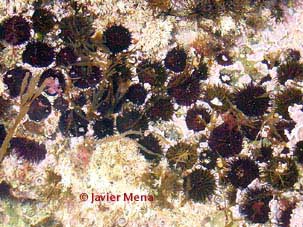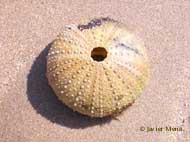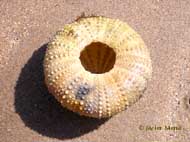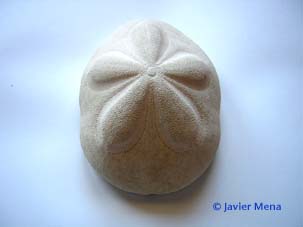The class Echinoidea contains sea urchins, sand dollars and heart urchins. There are approximately 940 species of echinoids.
Like all echinoderms, echinoids are pentaradially symmetrical and, have a water-vascular system.
Spines are primarily used for locomotion and defense against predators as crabs, sea stars, fish, birds, otters, and other mammals. Some species cover them with shell fragments, algae, or encrusting organisms to camouflage themselves from visual predators or, to provide shade from direct sunlight.
Most of sea urchins live on wave-exposed rocks, and on coral reefs. Sand dollars live in sand and coarse gravel. They eat algae, sea grass, and seaweed.




